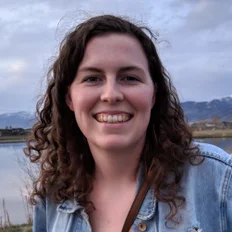USDALoans.com is a ICB Solutions Network Website
USDALoans.com is a product of ICB Solutions, a division of Neighbors Bank. ICB Solutions partners with a private company, Mortgage Research Center, LLC (NMLS #1907), that provides mortgage information and connects homebuyers with lenders. Neither USDALoans.com, Mortgage Research Center nor ICB Solutions are endorsed by, sponsored by or affiliated with the U.S Department of Agriculture or any other government agency. ICB Solutions and Mortgage Research Center receive compensation for providing marketing services to a select group of companies involved in helping consumers find, buy or refinance homes. If you submit your information on this site, one or more of these companies will contact you with additional information regarding your request. For a full list of these companies click here. By submitting your information you agree Mortgage Research Center can provide your information to one of these companies, who will then contact you. Neither Mortgage Research Center nor ICB Solutions guarantees that you will be eligible for a loan through the USDA loan program. USDALoans.com will not charge, seek or accept fees of any kind from you. Mortgage products are not offered directly on the USDALoans.com website and if you are connected to a lender through USDALoans.com, specific terms and conditions from that lender will apply.
ICB Solutions | NMLS #491986 (www.nmlsconsumeraccess.org)




























How this works
WHY ONLY ONE LENDER? We try to present multiple lender options, but there may be limited lenders available due to time of day or in certain geographic areas or for certain consumers. If presented with only one lender, you are not required to use that lender and MRC does not endorse any particular lender even if they appear by themselves. Feel free to check back at a different time to see if more lender options are available.
WHO IS DISPLAYED? The MRC network lenders (all of whom could be seen here) who appear are displayed based on information you provided, availability of our network lenders, and their geographic proximity to you. While you may only see a single lender displayed, generally, MRC displays any Local Lenders available in its network first; a Local Lender is a lender who services 1-2 states, including the state you are looking in. If no Local Lenders are available, a Regional Lender will be displayed; a Regional Lender is a lender who operates in the property state you selected and up to twenty-five surrounding states. Finally, if no Local or Regional Lenders are available, a National Lender will be displayed; a National Lender operates in all twenty-six states or more. If you’d like to see an alternate lender other than the lender(s) displayed, you can select other options or return to our form on another occasion.
HOW IS MRC PAID? The lender shown paid MRC to be displayed. Payment does not affect how prominently or how often a lender is displayed. MRC’s network does not include all lenders or loan products available in the marketplace. MRC does not endorse any lender. The choice of a lender is an important one and should not be based on advertising alone.
This website uses technologies such as cookies and pixels to improve site functionality, as well as for analytics and advertising. By continuing, you agree to our use of cookies and pixels. Learn more about our use of cookies and pixels in our privacy policy.